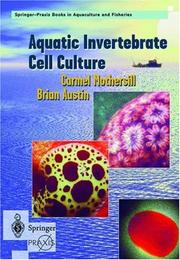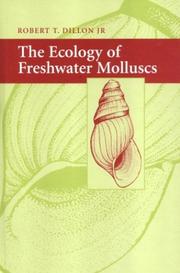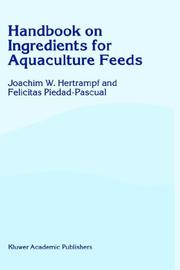| Listing 1 - 3 of 3 |
Sort by
|

ISBN: 1852336463 Year: 2000 Publisher: London ; New York : Springer,
Abstract | Keywords | Export | Availability | Bookmark
 Loading...
Loading...Choose an application
- Reference Manager
- EndNote
- RefWorks (Direct export to RefWorks)

ISBN: 1107111501 0511052383 0511324987 0511173407 0511152450 0521359910 0511542003 9786610432059 1280432055 0511017286 9780511017285 0511037155 9780511037153 9780511152450 9780511052385 9780511173400 9780521352109 052135210X 9780511542008 9780521359917 Year: 2000 Publisher: Cambridge : Cambridge University Press,
Abstract | Keywords | Export | Availability | Bookmark
 Loading...
Loading...Choose an application
- Reference Manager
- EndNote
- RefWorks (Direct export to RefWorks)
This book provides a comprehensive review of the ecology of freshwater bivalves and gastropods worldwide. It deals with the ecology of these species in its broadest sense, including diet, habitat and reproductive biology, emphasising in particular the tremendous diversity of these freshwater invertebrates. Following on from these introductory themes, the author develops a life history model that unifies them, and serves as a basis for reviews of their population and community ecology, including treatments of competition, predation, parasitism and biogeography. Extensively referenced and providing a synthesis of work from the nineteenth century onwards, this book includes original analyses that seek to unify previous work into a coherent whole. It will appeal primarily to professional ecologists and evolutionary biologists, as well as to parasitologists.
Gastropoda --- Bivalves --- Freshwater invertebrates --- Aquatic invertebrates --- Freshwater animals --- Acephala --- Aglossa --- Anodontoda --- Bivalvia --- Conchifera --- Conchophora --- Cormopoda --- Dithra --- Elatobranchiata --- Elatocephala --- Eulamellibranchia --- Lamellibranchia --- Lamellibranchiata --- Lipocephala --- Pelecypoda --- Teleodesmacea --- Tropipoda --- Mollusks --- Gasteropoda --- Gastropods --- Ecology. --- Ecology

ISBN: 0412627604 1402015275 9401140189 9781402015274 Year: 2000 Publisher: Dordrecht : Kluwer,
Abstract | Keywords | Export | Availability | Bookmark
 Loading...
Loading...Choose an application
- Reference Manager
- EndNote
- RefWorks (Direct export to RefWorks)
Current growth in global aquaculture is paralleled by an equally significant increase in companies involved in aquafeed manufacture. Latest information has identified over 1,200 such companies, not including those organizations in production of a variety of other materials, i. e. , vitamins, minerals, and therapeutics, all used in varying degrees in proper feed formulation. Aquaculture industries raising particular economically valued species, i. e. , penaeid shrimps and salmonids, are making major demands on feed ingredients, while relatively new industries, such as til apia farming, portent a significant acceleration in demand for properly formulated aquafeeds by the end of the present decade and into the next century. As requirements for aquafeeds increases, shortages are anticipated in various ingredients, especially widely used proteinaceous resources such as fish meal. A variety of other proteinaceous commodities are being considered as partial or complete replacement for fish meal, especially use of plant protein sources such as soybean meal. In the past five years, vegetable protein meal production has increased 10% while fish meal production has dropped over 50%, since 1989, largely attributed to overfishing and serious decline in wild stock. Throughout fisheries processing industries, traditional concepts as "waste" have given way to more prudent approaches, emphasizing total by-product recovery. Feed costs are a major consideration in aquaculture where in some groups, i. e. , salmonids, high protein-containing feeds using quality fish meal, can account for as much as 40 to 60% of production costs.
639.3.043 --- Feeding, nutrition of fish. Fish foods --- Fishes --- Shellfish --- Zoology and Animal Sciences. Aquaculture and Fisheries --- Feeding and feeds. --- Nutrition. --- Aquaculture --- Nutrition and Feeding --- Earth & Environmental Sciences --- Ecology --- Agriculture --- Animal Sciences --- Feeding and feeds --- Nutrition --- Nutrition and Feeding. --- 639.3.043 Feeding, nutrition of fish. Fish foods --- Shell-fish --- Shellfishes --- Aquatic invertebrates --- Food --- Aquatic ecology . --- Food—Biotechnology. --- Animal physiology. --- Freshwater & Marine Ecology. --- Food Science. --- Animal Physiology. --- Animal physiology --- Animals --- Biology --- Anatomy --- Aquatic biology --- Physiology
| Listing 1 - 3 of 3 |
Sort by
|

 Search
Search Feedback
Feedback About
About Help
Help News
News